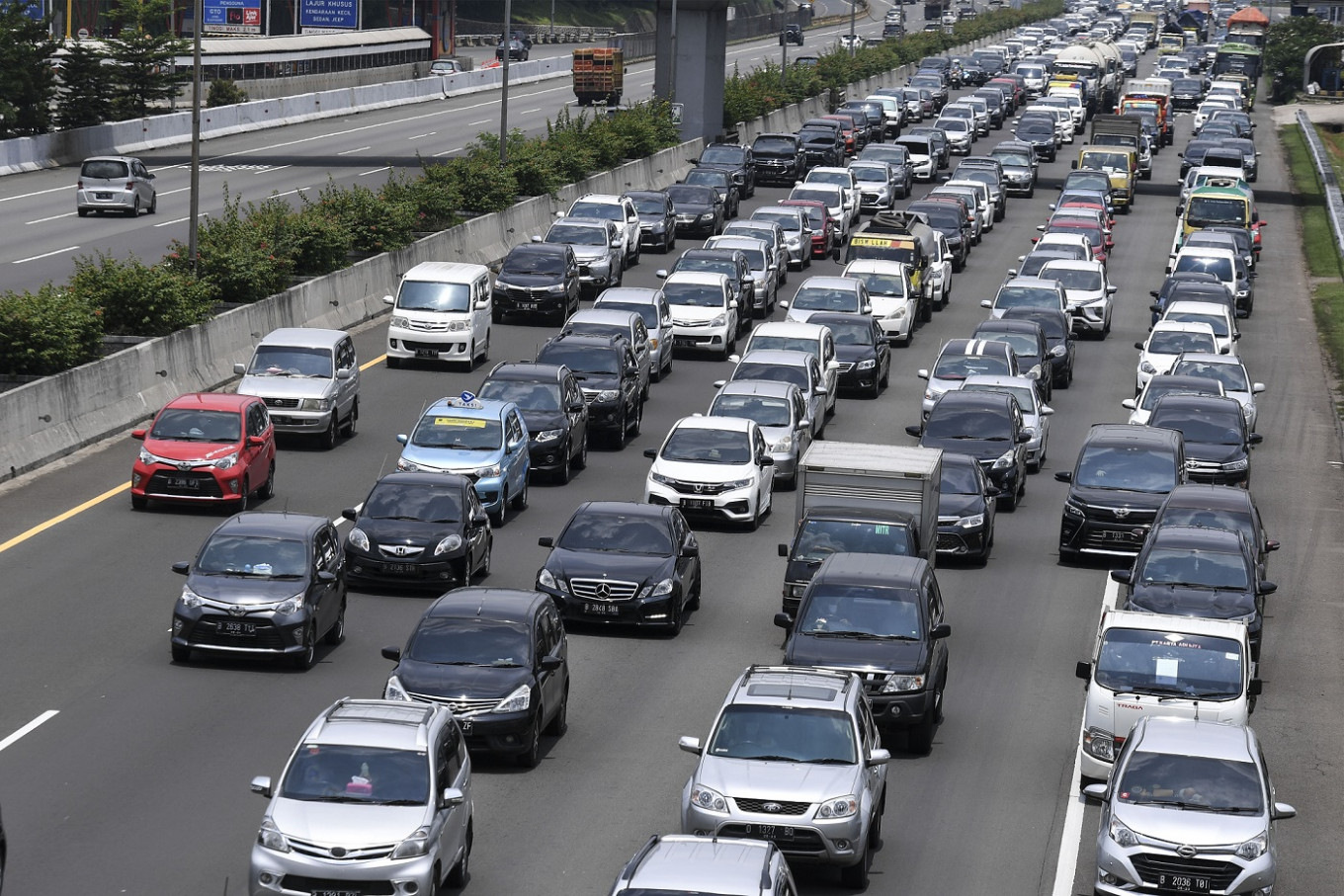Popular Reads
Top Results
Can't find what you're looking for?
View all search resultsPopular Reads
Top Results
Can't find what you're looking for?
View all search resultsNew car emissions tax in effect, but poised to little spur EV demand
Automakers say the new tax will push them to make lower emission cars, but it is still not enough to cover the price gap with EVs.
Change text size
Gift Premium Articles
to Anyone
A
new emissions-based luxury tax (PPnBM) on cars came into effect on Saturday, which is meant to spur lower-emission car demand, but automakers say the tax little addresses the price gap between regular cars and eco-friendly cars, including electric cars.
Government Regulation (PP) No. 73/2019, which took effect two years after its issuance, imposes higher luxury tax rates on cars with higher engine capacities and greater tailpipe carbon dioxide (CO2) emissions, measured in CO2 grams per kilometer (g/km).
It amends the preceding 2013 regulation that charged PPnBM rates relative to engine capacities, passenger capacities and vehicle types: sedan or non-sedan.
The new regulation charges a PPnBM rate of 0 percent for electric vehicles (EVs) and from 2 to 12 percent for hybrid cars, it raises the rate from 0 to 3 percent for low-cost green cars (LCGCs) – fossil fuel-powered vehicles despite their name – and sets a rate from 15 to 40 percent for regular fossil-fueled powered cars.
“This newly issued emission-based luxury tax is an effort from the government to encourage the production of more environmentally friendly vehicles with low emissions,” Industry Ministry spokesperson Febri Hendri told The Jakarta Post on Oct. 13.
The government has big plans to spur electric vehicle (EV) adoption in Indonesia to reduce oil imports, lower air pollution and attract foreign investment, but adoption rates remain low at – as of last month – 0.04 percent of the 400,000 electric cars by 2025 target.
Read also: Indonesia 'still far' from EV adoption target: Ministry official
The Investment Ministry also recently secured interest from German carmaker Volkswagen and chemical producer BASF to invest in Indonesia’s EV battery supply chain, after South Korea’s Hyundai and LG kicked off the construction of an EV battery plant last year.
Enough to push EV transition?
Association of Indonesia Automotive Industry (GAIKINDO) secretary general Kukuh Kumara told the Post on Oct. 11 that the new luxury tax rules would push manufacturers to produce lower-emission cars to keep prices affordable for the market.
However, the new regulation’s effect on EV adoption is expected to be minimal, as most EVs would remain costly despite the PPnBM cut, he said.
“Some EVs still cost over a billion rupiah, and they make up a small portion of the market. It will still take time, unless there are electric cars that are affordable,” Kukuh said.
Electric cars cost roughly three times as much as their fossil fuel-powered counterparts, according to a study by Jakarta-based Institute for Essential Services Reform (IESR).
Bob Azam, director for technical government affairs at Toyota Motor Manufacturing Indonesia (TMMI), the top automaker in Indonesia, told the Post on Oct. 12 that EV technology was still novel, which meant buyers had to pay steep prices to own EVs.
Furthermore, the limited availability of charging stations in Indonesia, among many other infrastructure problems, hindered EV adoption.
Low-middle income consumers
TMMI’s Bob suggested the government incentivized buying hybrid cars and flexible fuel cars – those that can run on high-level blend biofuels – as a transitory technology to EVs. Such cars are more affordable than EVs, but have lower emissions than regular cars.
“If the price [of regular cars] rises, there should be a solution [for low-middle income homes] based on more affordable technologies. Do not penalise them, but incentivize them instead,” he said.
Government Regulation 74/2021, which amends certain clauses in the 2019 PP, raised the luxury tax rates on hybrid vehicles to encourage EV adoption.
The new regulation raises the PPnBM rate for plug-in hybrids from 0 to 5 percent, and for full hybrid vehicles with emissions below 100 CO2 g/km from 2 to 6 percent.
Read also: Manufacturing car battery
Andry Satrio Nugroho, who heads the Center of Industry, Trade and Investment at the Institute for Development of Economics and Finance (Indef), said the new regulation carried risks related to disrupting daily and business activities because most Indonesians, especially low-middle income Indonesians, relied on fossil fuel-powered vehicles.
“Encouraging the public to purchase more sustainable goods is a good thing, but we should not overlook its potential impact on a particular [demographic] group,” Andry told the Post on Oct 12.
Industry Ministry spokesperson Febri said the government had limited the hike in luxury tax rates for LCGCs precisely to shield low-middle income groups.
“As for lower-middle consumers, the government has paid attention to them by giving a low rate of luxury tax for LCGCs at only 3 percent,” he said.










